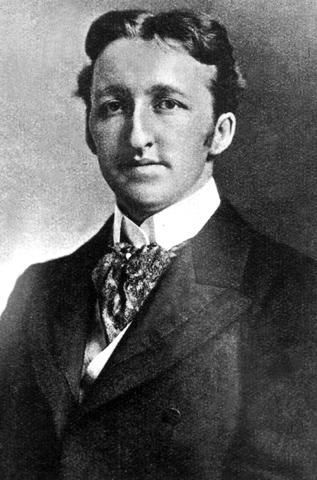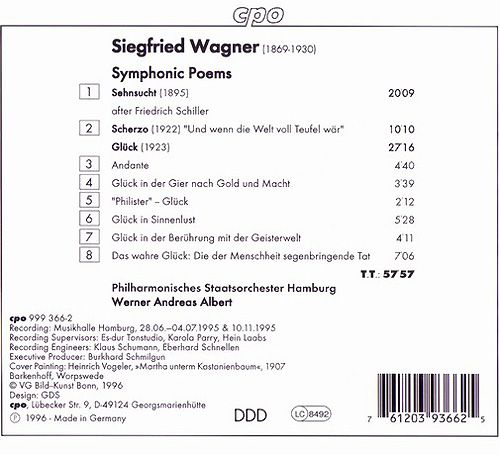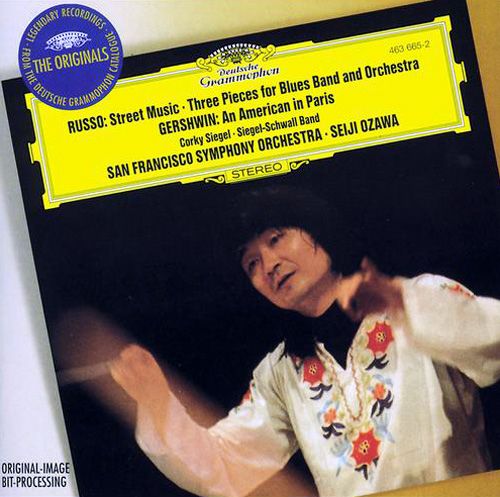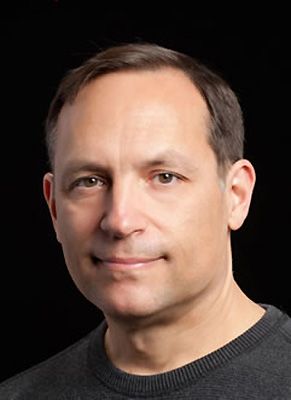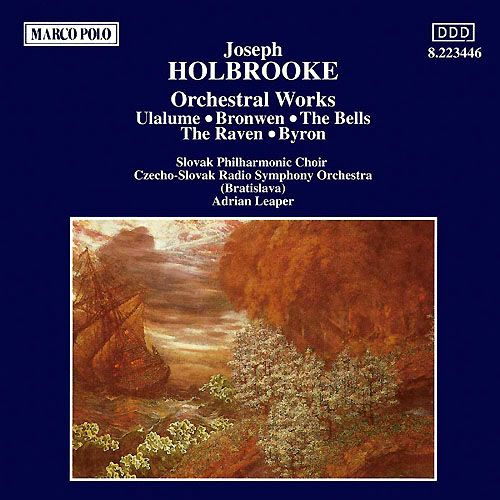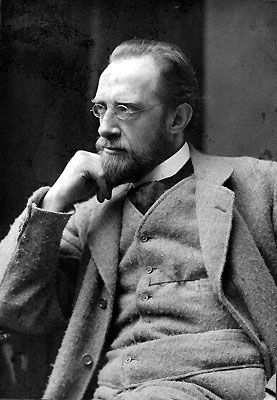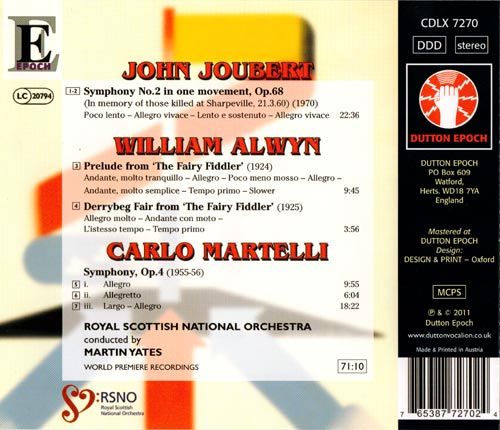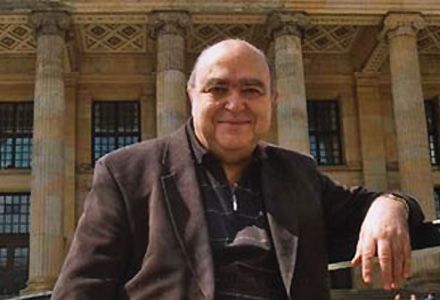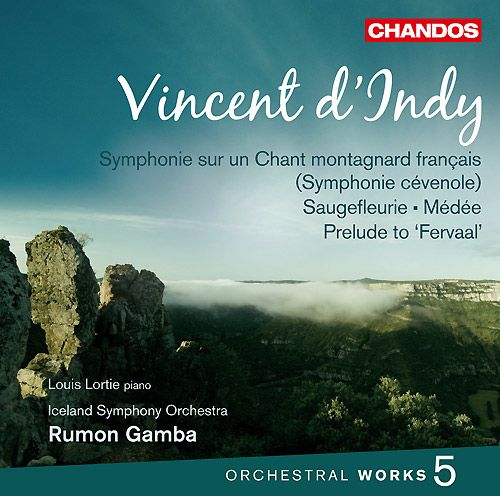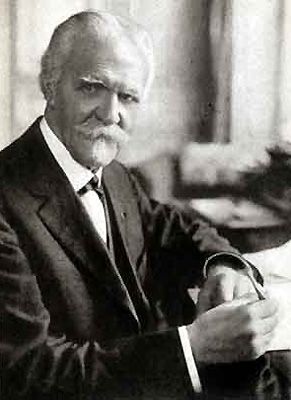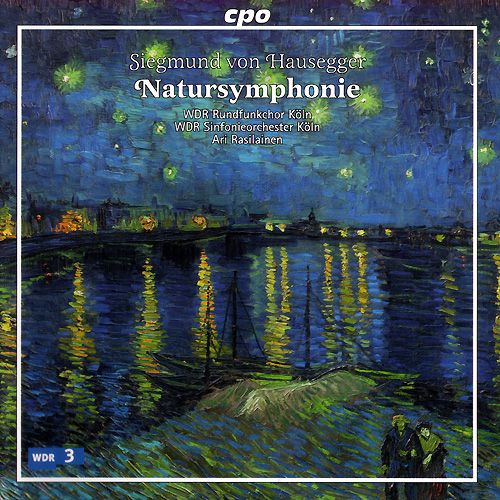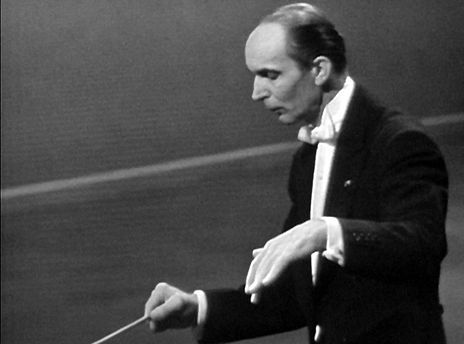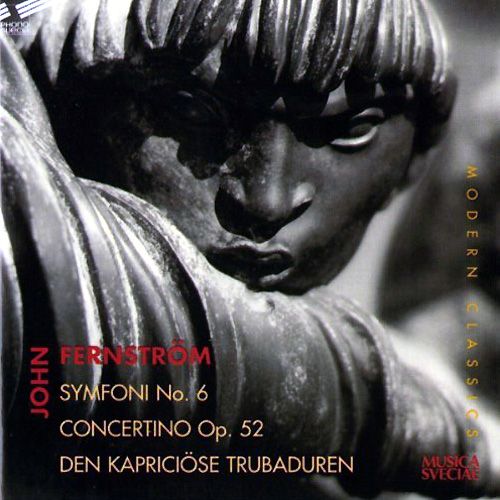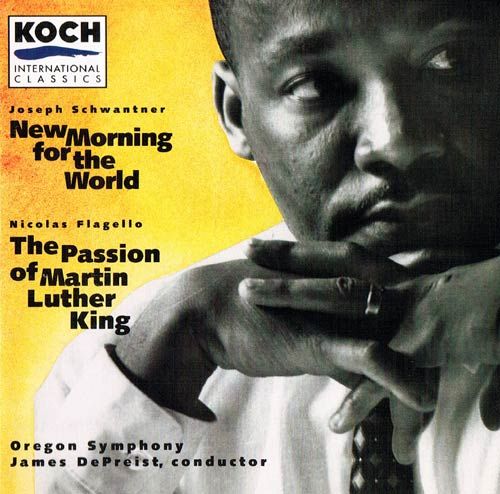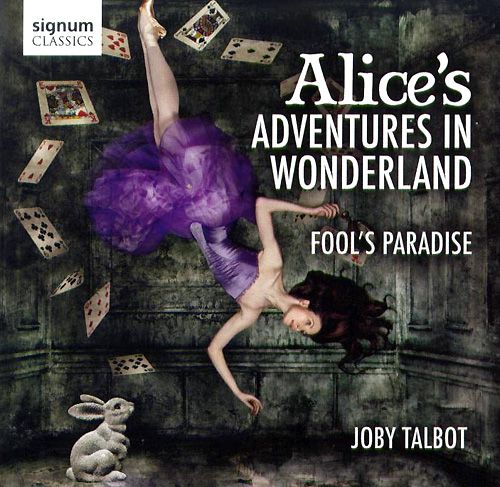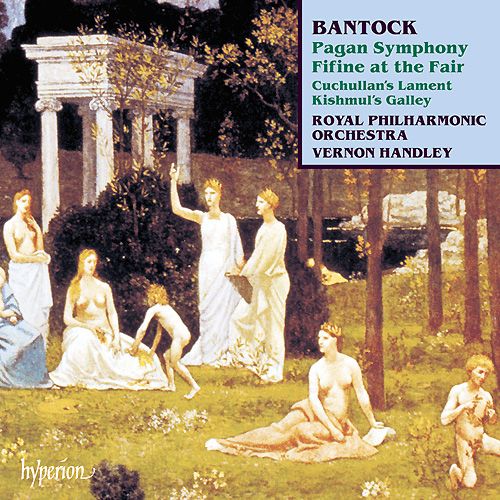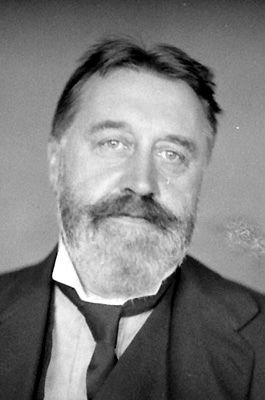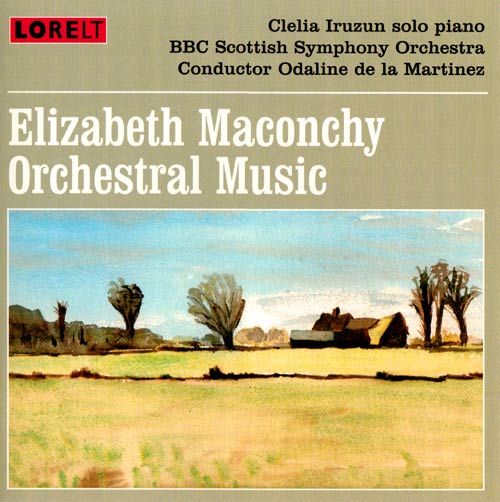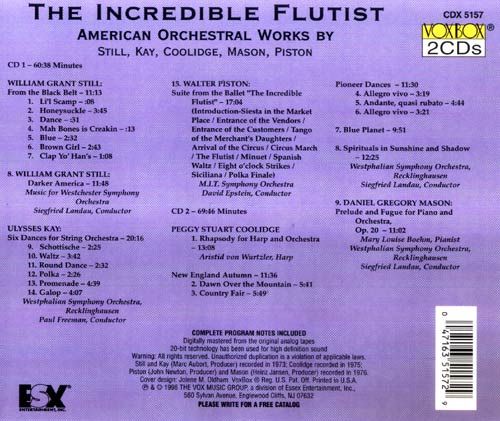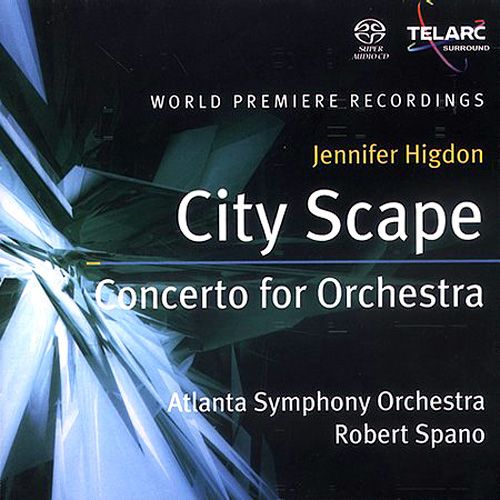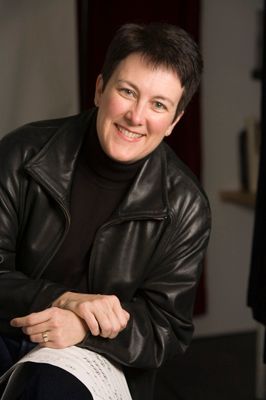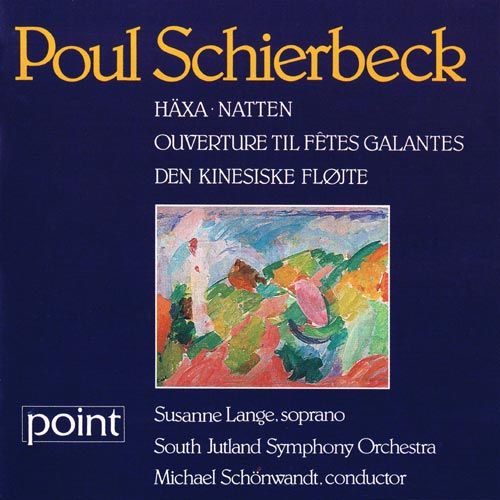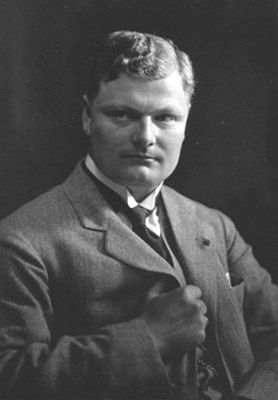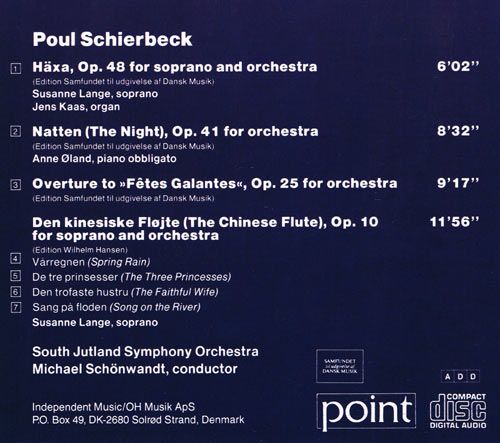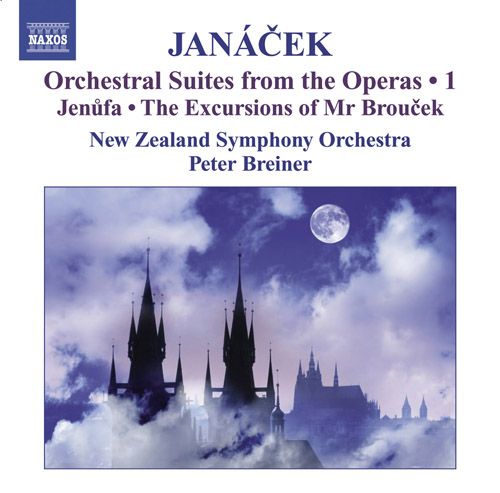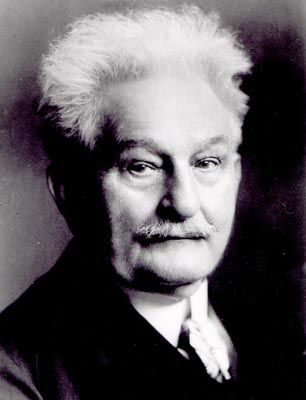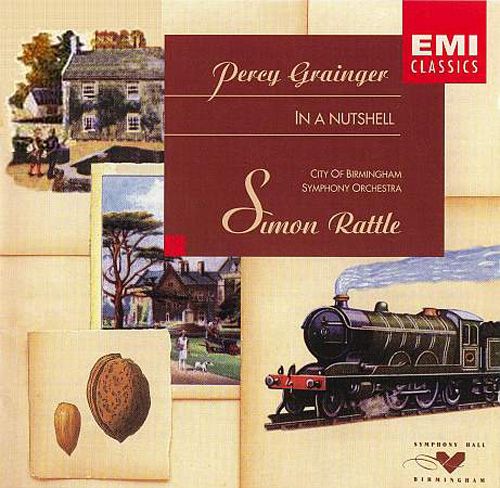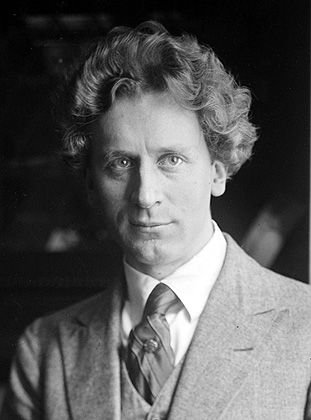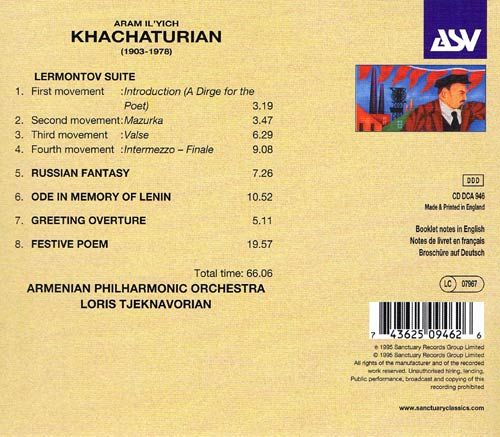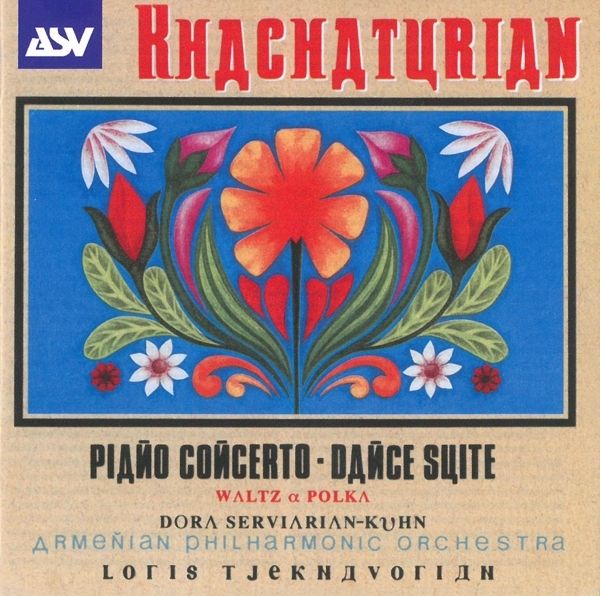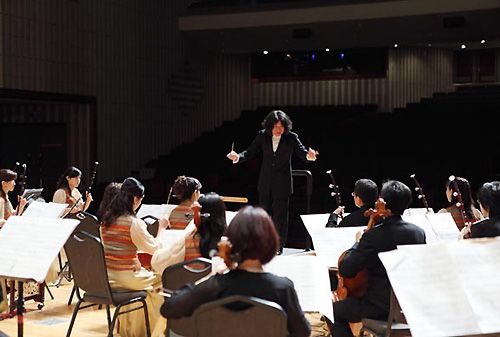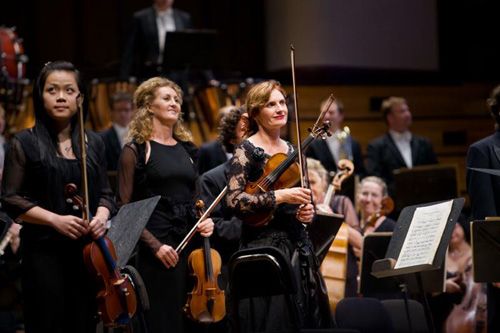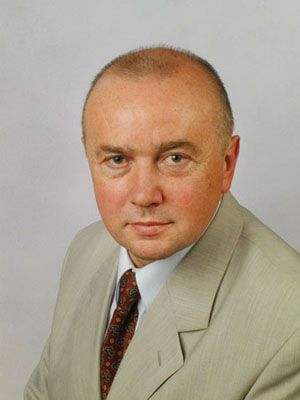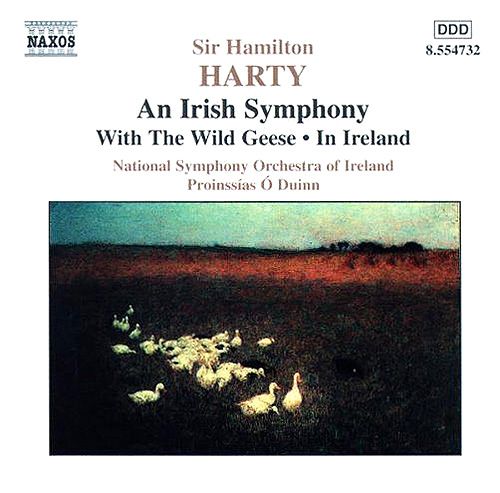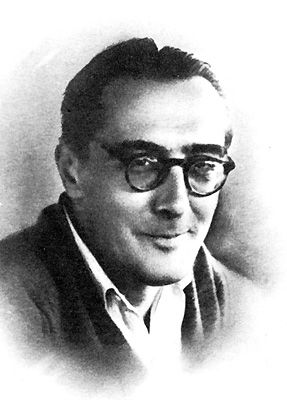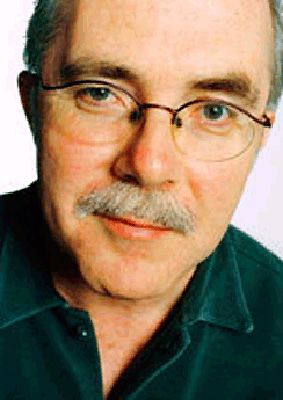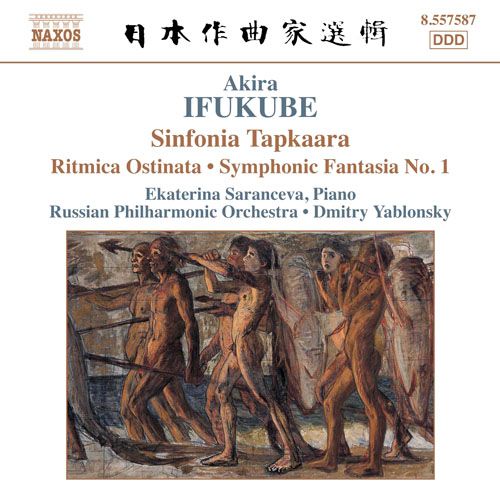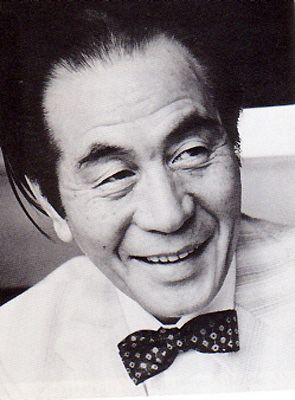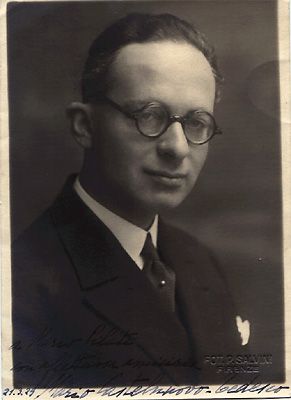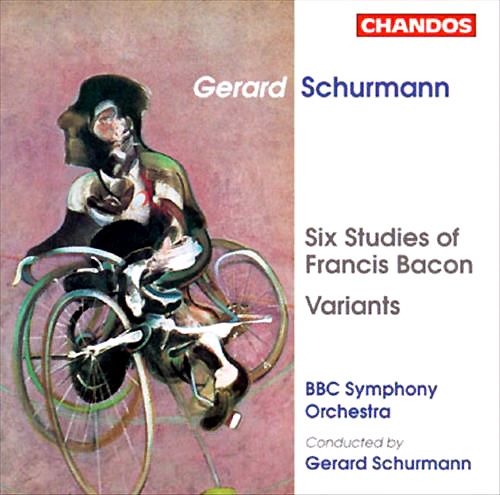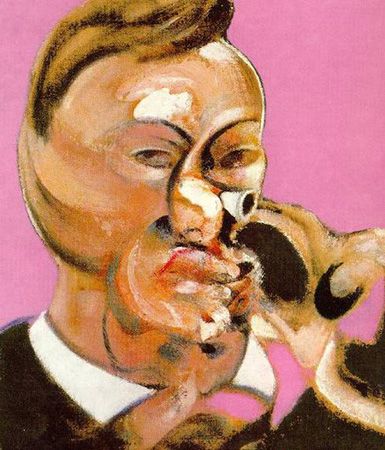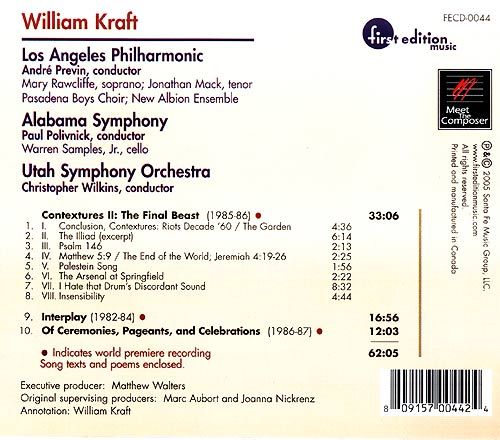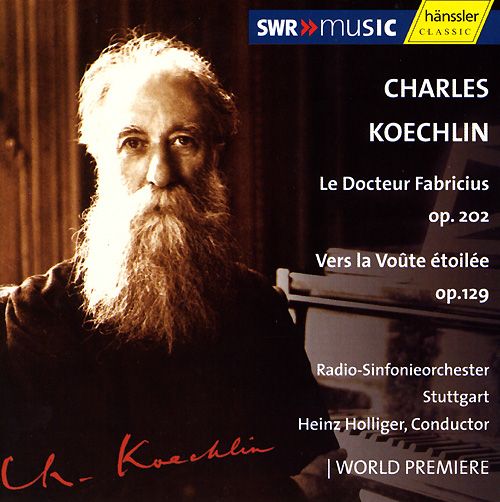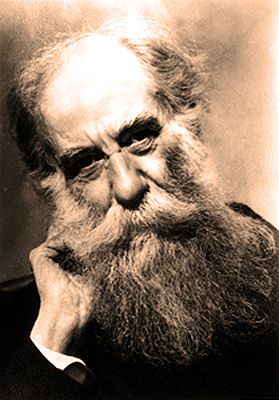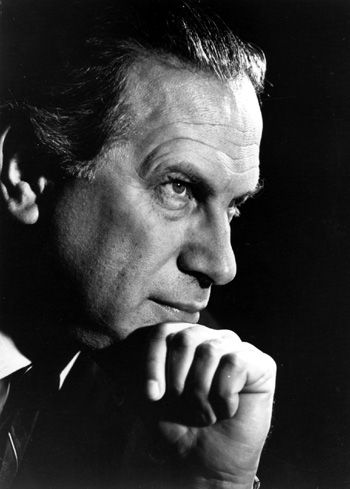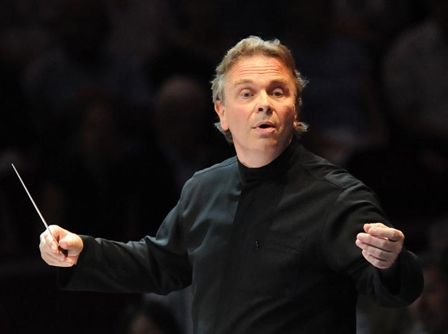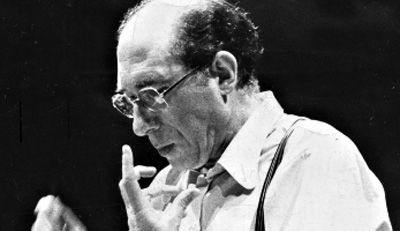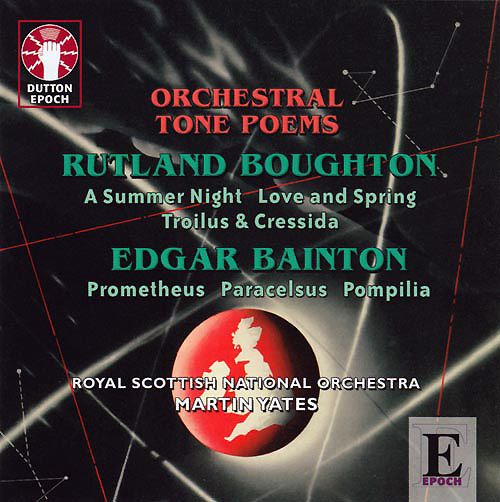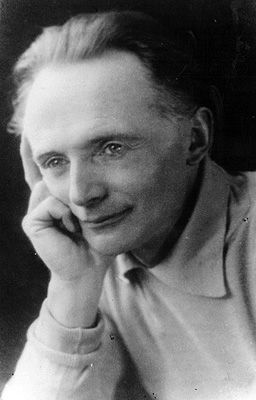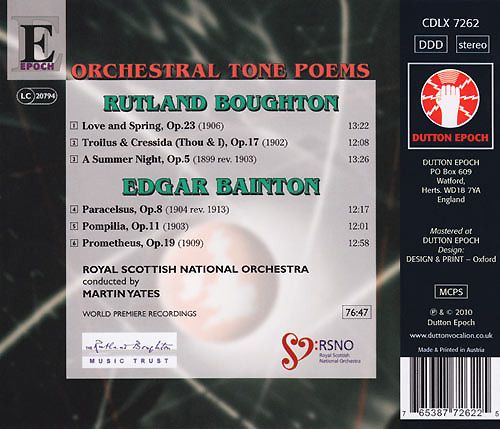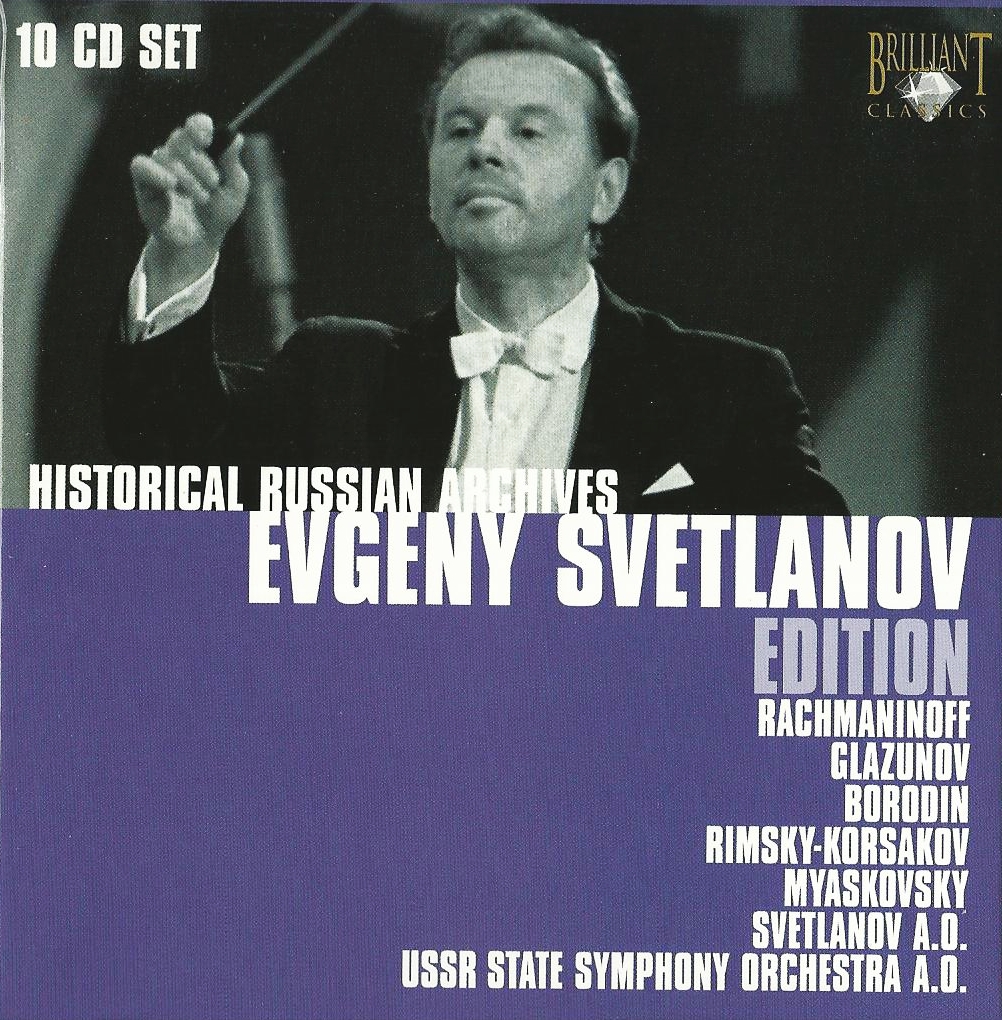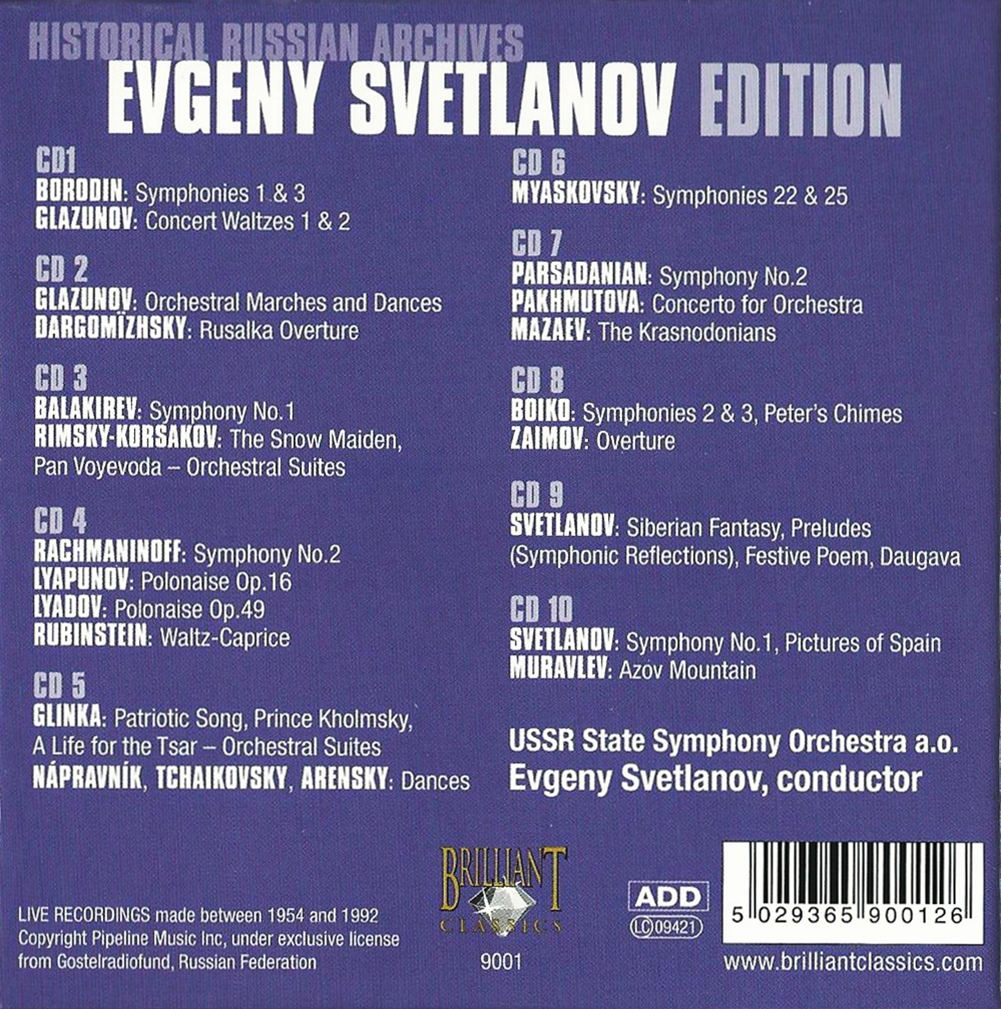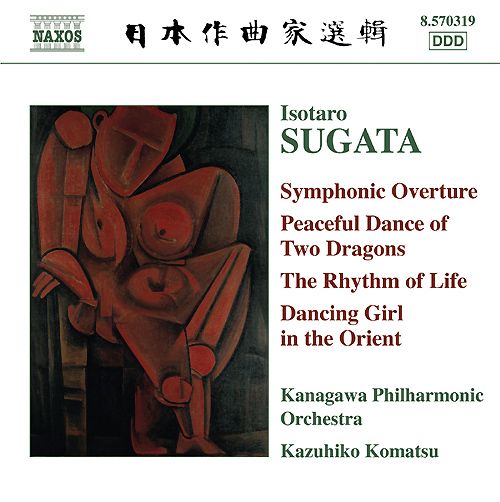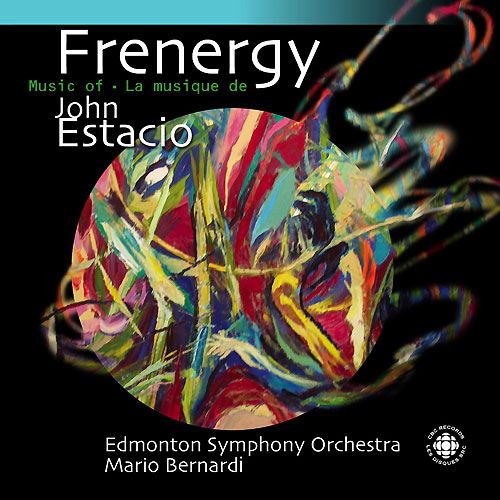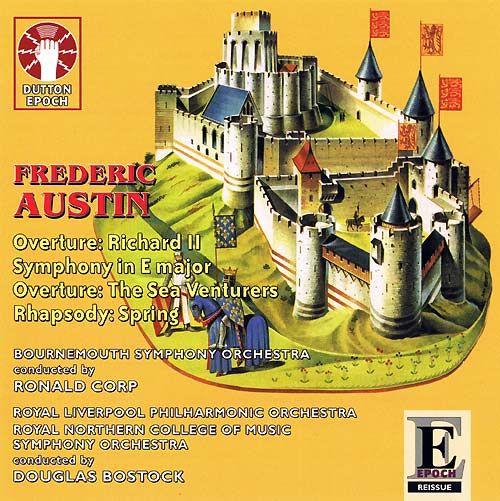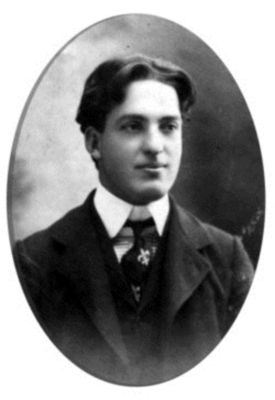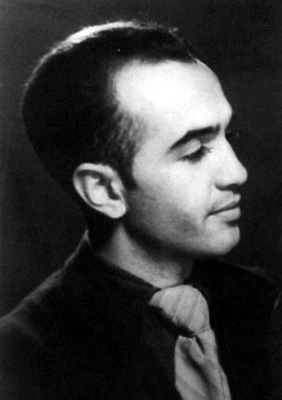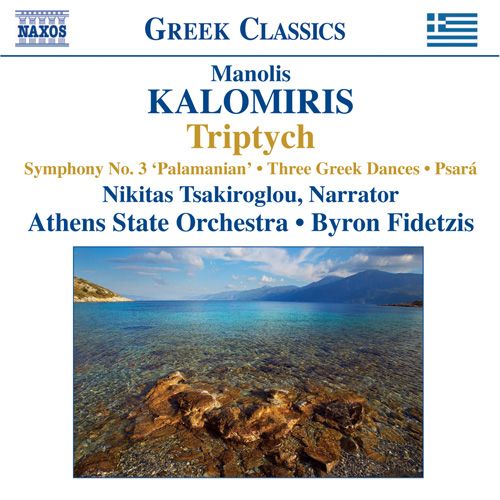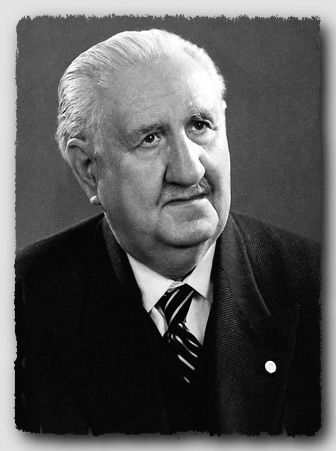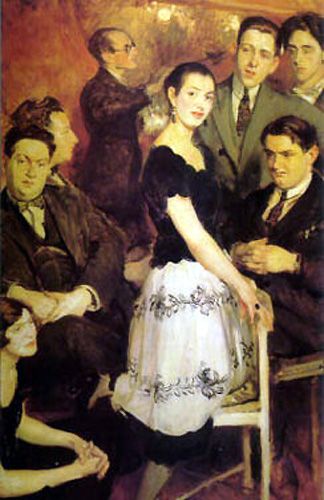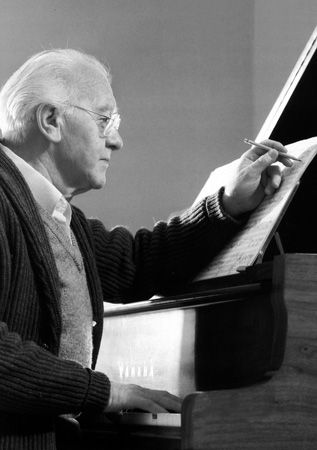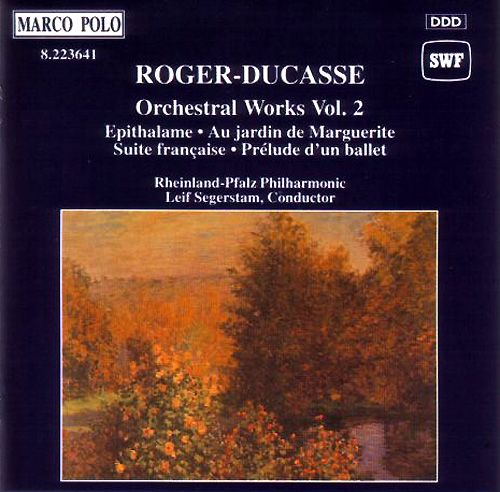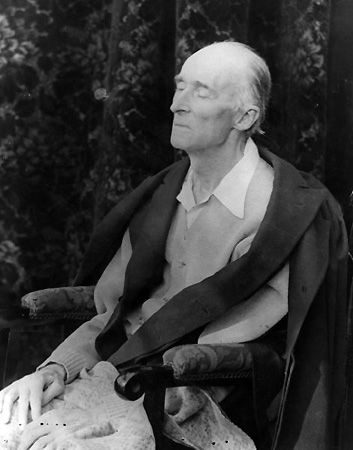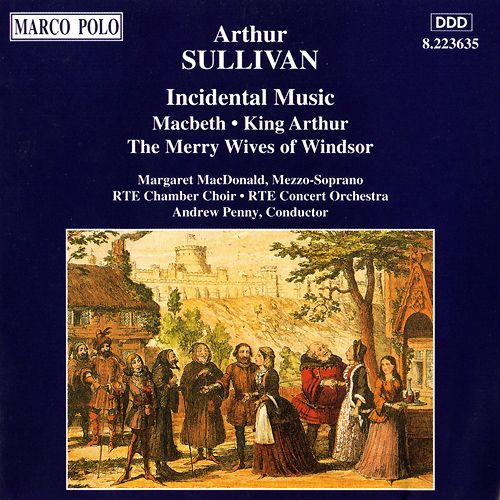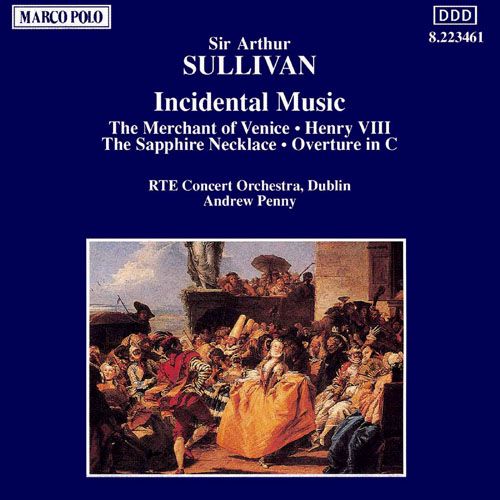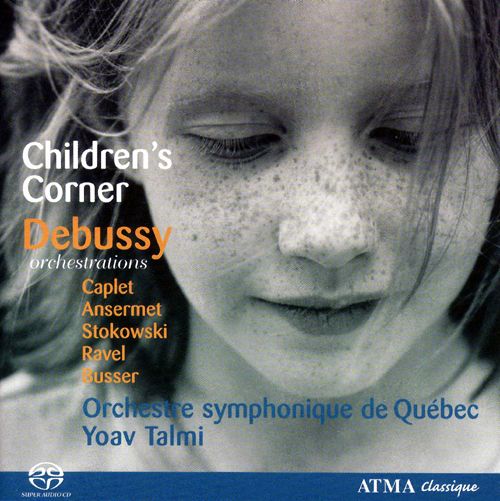No.309
Alexander Moyzes was the son of Mikulaš Moyzes, an important figure in the development of Slovak national music in the
years leading up to 1918 and the establishment of Czechoslovakia. He was born in 1906 in north-west Slovakia and
learned at first with his father before entering in 1925 the Prague Conservatory, where he studied organ, conducting
and composition. He graduated in 1929, the occasion of his First Symphony, and went on to study in the master class
of Vitezslav Nov�k, from which he graduated in the following year with his Overture for Orchestra, Opus 10. It was
Novak too who directed his concentration on Slovak music, the source of his inspiration.
Moyzes has particular distinction as a symphonist, his Ninth Symphony having been completed in 1971. His suite for large
orchestra, Dances from Gemer, Opus 51, was written in 1956, the period of his Seventh Symphony. Its four
characteristic movements epitomise the national music of Slovakia in form and idiom. With Eugen Suchoň and J�n Cikker,
Moyzes is considered one of the three leading composers of his generation in Slovakia. He succeeded in creating a style
of composition that was thoroughly Slovak in inspiration, yet nevertheless took account of contemporary trends in
European music, a synthesis that he was to consolidate in his later years.
The suite Down the River V�h draws overt inspiration from the scenery of Slovakia, for which Moyzes had a
particular affection, and was started in 1935 for the Czechoslovak Radio Orchestra. He returned to the work after the
war, developing it into its present form. The suite opens with sources of the river, surrounded by the peaks of the Tatra
mountains, from which it flows. The water tumbles down over the rocks, meeting as a river in the valley, and flowing on
in a majestic hymn to the Morava and the Danube. The second movement finds the river passing through flowery meadows,
where a shepherd plays his pipe, the sound echoing into the dusk as the sun sets. The river grows wilder and there is
thunder and lightning, while river raftsmen negotiate the rapidly swirling waters through the gate of Slovakia, guarded
by the old castle of Strecno. In Romance Moyzes recalls olden times, trumpeters calling noble guests to feasting in the
castle, while the peasants suffered, protected only by outlaws who robbed the rich to help the poor. The suite ends
as the V�h grows in size, rushing on to meet the Danube in the summer sunshine, with snatches of folk song and
dance to be heard through its surging waters.
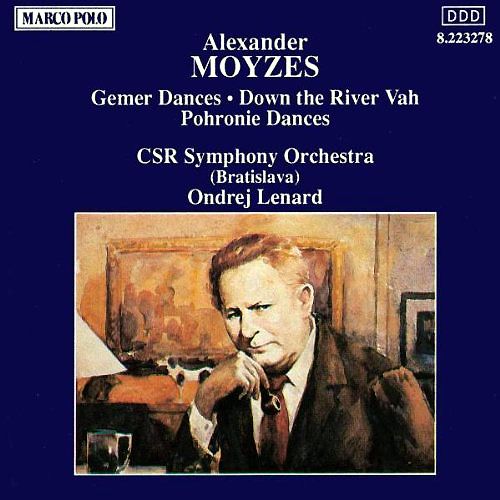
Music Composed by Alexander Moyzes
Played by the Slovak Radio Symphony Orchestra
Conducted by Ondrej Lenard
"A capable conductor whose name might otherwise have meant little in the West, Ondrej Len�rd has gained
currency through a series of recordings released on the Marco Polo and Naxos labels, including a number of CDs
devoted to the music of Johann Strauss II. He also led a recording of Havergal Brian's massive Gothic Symphony,
allowing the public to hear the work for the first time. Eventually, he came to conduct abroad, winning particular
favor in Vienna and the Far East.
While still a student at the Academy of Fine Arts in Bratislava, Len�rd was engaged as chorus master for the
Bratislava Opera Chorus. For his graduation concert at the Academy, he appeared before the Slovak Philharmonic,
beginning a long association with that ensemble. In 1964, Len�rd was appointed official chorus master of the Slovak
National Theatre. Five years later, he was engaged as principal conductor of Bratislava's Czechoslovak Radio Symphony.
With that orchestra, he toured and recorded extensively in a relationship that was to endure for decades. Successful
appearances in the Far East led to his appointment as standing guest conductor of Tokyo's Japan Shinsei Symphony
Orchestra in 1978.
In 1984, another prestigious appointment placed Len�rd in the position of principal conductor of the Slovak National
Theatre in Bratislava; in the new millennium, he was made general manager of the opera company. During his many years
there, he has overseen the careers of such star-quality singers as tenor Peter Dvorsk�, bass Sergej Kopc�k, and
dramatic soprano Eva Urbanov�. Elsewhere, he forged a positive relationship with the Vienna Staatsoper, Naples' Teatro
San Carlo, and the Houston Grand Opera. Guest appearances in many European centers, in Brazil, Canada, and other
parts of the United States, contributed to the conductor's growing reputation for mastery of his resources in the opera
house and on the concert stage.
Given the title of principal conductor of the Slovak Philharmonic in 1991, Len�rd has led the orchestra in both subscription
concerts and in festival performances. Among the latter were acclaimed performances of Verdi's Manzoni Requiem at
the 1993 Smetanova Litomyšl Festival. In 1995, Smetana's Vltava was hailed as outstanding and, in 1999, Len�rd won
particular commendation for a performance of Honegger's Jeanne d'Arc au b�cher."

Source: Marco Polo CD (my rip!)
Format: mp3, 320k/s (CBR), DDD Stereo
File Size: 153 MB (incl. liner notes)
Download Link (re-up) -
https://mega.co.nz/#!sB5ghQDA!NH-w0Hzhx8IoqOCzdlkJkAtdHo4rfDzdduRyD2wKZr0
Enjoy! Don't share! Buy the original! :)
---------- Post added at 03:24 PM ---------- Previous post was at 02:30 PM ----------
No.310
Anatol Konstantinovich Lyadov (the last name is often spelled "Liadov"), 1855-1914, was the son and grandson of
noted conductors who led musical ensembles at the Mariinsky Theater and the St. Petersburg Philharmonic,
respectively. The young Lyadov showed exceptional talent and was admitted to the Conservatory. While
admiring his native talent, his main teacher, Nikolai Rimsky-Korsakov, was forced to expel him for unexplained
absences. He was later permitted to take the graduation exams, and passed them easily. He became a noted
professor and ethnomusicologist (publishing over 120 folk songs). He married in 1884, a match that gave him
considerable wealth and a large estate at Polinovka.
His music is beautiful, exceptionally skilled and imaginative, with an impressionistic mood (though not the
Debussyian style that word usually denotes). He was said to be shy and diffident. Either because of exceptional
lack of confidence or laziness he was incapable of completing more than a few large-scale works. He wrote some
piano pieces and songs, a few choruses, and about a dozen small but evocative orchestral works, some of which
were fragments from his unfinished opera Zoryushka. His inability to finish a commission from Diaghilev to write
the score for a ballet, The Firebird, led, famously, to its being given to the young Igor Stravinsky and launching
that composer to international fame.

Music Composed by Anatoly Liadov
Played by the Krasnoyarsk Symphony Orchestra
Conducted by Ivan Shpiller
"Liadov specialised in brief and sometimes concentrated tone poems, in dances and in atmospheric genre
miniatures. These are good performances with a small measure of imperfect ensemble recorded in a very lively
and resonant hall. Contrast the struttingly grand Pushkin and Rubinstein polonaises with the touching and soulful
About Olden Times; the latter’s Slavic melancholy is worn on its sleeve. Strangely the melody reminded me of
John Foulds’ Gaelic Lullaby before it sets off in a typically lively way reminiscent of Borodin and Kalinnikov. Nenie
has a nervy and Tchaikovskian character. The ticking pulse of Musical Snuffbox is utterly charming so if you
already warm to The Nutcracker – and who doesn’t – this will instantly win you over. The blare and oppression
of Dance of the Amazons connotes something tougher. And further out along that branch we come to Fragment
from The Apocalypse - a work seemingly caught up in the same visionary Theosophical mysteries as Scriabin in
his Poem of Ecstasy. In this work ringing grandeur rides high in massive combers of sound. The Eight Russian
Folk Songs can be enjoyed in the same company as Balakirev’s folk-themed overtures. The disc ends with Liadov’s
most celebrated tone poems. Kikimora, the story of a tiny spiteful witch is most touching and is spun with gold
and silver in the great tradition of Kouchka nationalism. Its magic can be related to a later but much more
familiar work – the creepy exoticism of Stravinsky’s The Firebird. The same magic arches over The Enchanted
Lake in a sweetly sorrowing impressionistic shimmer. Lastly there’s another piece of gruff witchery in the shape
of the wicked hag Baba-Yaga. She was recalled in Bax’s book Farewell My Youth. Here she is keenly portrayed
in spitting Mussorgskian fury as she blunders through the Russian forests with monstrous mortar and pestle.
The brief notes are by Dr David Doughty and usefully hold the listener’s hand through these discoveries.
Interesting to see that this vivid recording was produced by the son of Kirill Kondrashin, Pyotr Kondrashin.
Anyone with a taste for Russian nationalism needs to hear the Liadov orchestral works. This disc is an apt
way of getting to know them in vividly recorded and dedicated performances."
Musicweb International
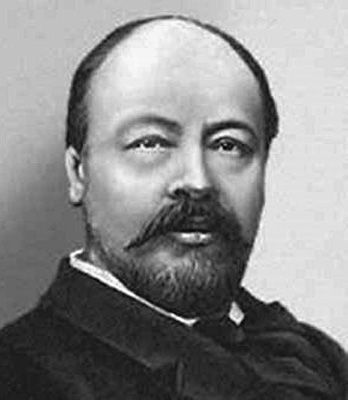
Source: Brilliant Records CD (my rip!)
Format: mp3, 320k/s (CBR), DDD Stereo
File Size: 163 MB
Download Link (re-up) -
https://mega.co.nz/#!O9YBBQzR!VCrtHQadbVov7evtk283IjjtshpBs-n3DWchyr2SMOQ
Enjoy! Don't share! Buy the original! :)
---------- Post added at 04:05 PM ---------- Previous post was at 03:24 PM ----------
No.311
Alfredo Casella (1883-1947) was an outstanding if uneven composer who led several of his
contemporaries -- Respighi, Malipiero, Pizzetti, and others -- in a struggle to modernize Italian
music. His interests as a composer and as an author of articles on music were highly cosmopolitan,
as may be gathered from his early enthusiasms for Debussy, the Russian nationalists, Strauss,
Bart�k, and Schoenberg. Yet Casella was also intensely inspired by Italian culture, both its
folkways and its Futurism movement. His early works, particularly his first two symphonies
(1905 and 1909), were extremely modernistic for their time; that is, they were influenced by
Richard Strauss (as is the symphonic poem Italia, featured here) and Gustav Mahler (Casella
even transcribed the latter's Seventh Symphony for piano, four hands). But Casella eventually
settled into an energetic, spiky neo-Classicism owing much to Stravinsky and something to Ravel.
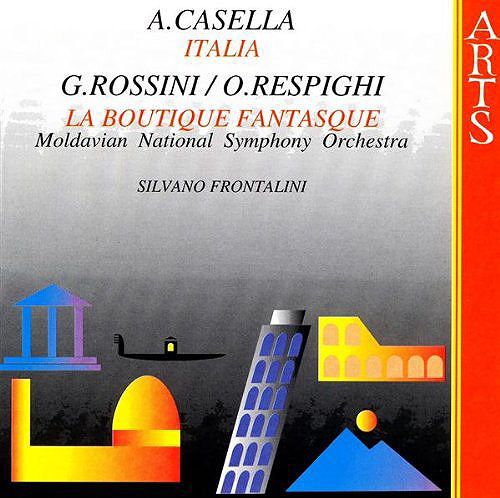
Music Composed by Alfredo Casella & Ottorino Respighi
Played by the Moldavian National Symphony Orchestra
Conducted by Silvano Frontalini
"La Boutique fantasque or The Magic Toy Shop is a ballet conceived by L�onide Massine
who wrote the choreography and the libretto Ottorino Respighi wrote the music based on
piano pieces by Gioachino Rossini. Its world premiere was at the Alhambra Theatre in London
on 5 June 1919, performed by Sergei Diaghilev's Ballets Russes. Lydia Lopokova and Massine
played the roles of the can-can dancing dolls in the original performance with
Enrico Cecchetti as the shopkeeper. The story of the ballet has similarities to Die Puppenfee
("The Fairy Doll" of Josef Bayer), an old German ballet which had been performed by
Jose Mendez in Moscow (1897) and by Serge and Nicholas Legat in Saint Petersburg (1903)
in the early twentieth century. Others note the similarities to Hans Christian Andersen's
The Steadfast Tin Soldier. Massine's story centers around the love story between two can-can
dancer dolls in a toy shop. Its general theme is lightly satirical, incorporating elements of
comedy, national folk dance and mime as well as classical choreography, and its story
unfolds in three acts."
Wikipedia

Source: Arts CD (my rip!)
Format: mp3, 320k/s (CBR), DDD Stereo
File Size: 135 MB
Download Link (re-up) -
https://mega.co.nz/#!lA5FlapT!Txn5-jpHLsFIHK-dyhHxiiEFJPdfMN5jOQk7dYHGnL4
Enjoy! Don't share! Buy the original! :)




